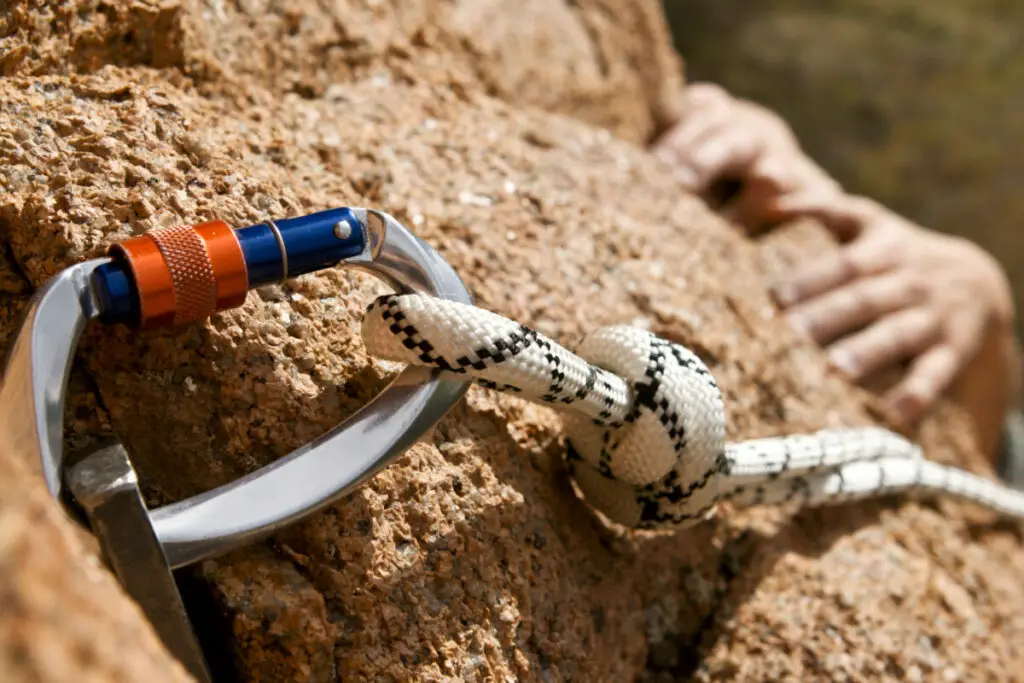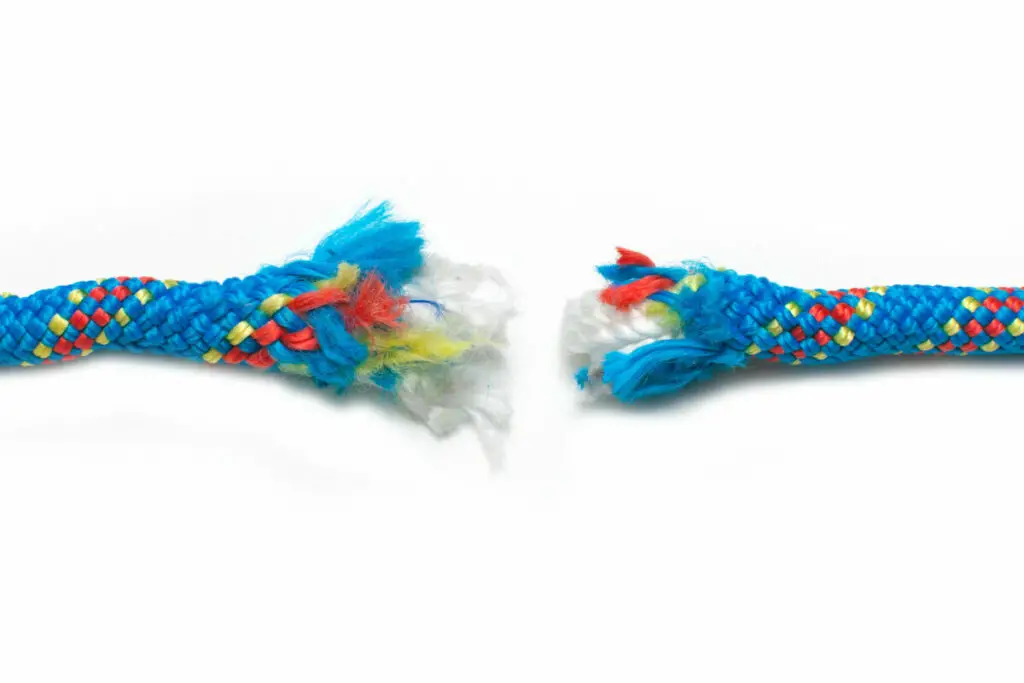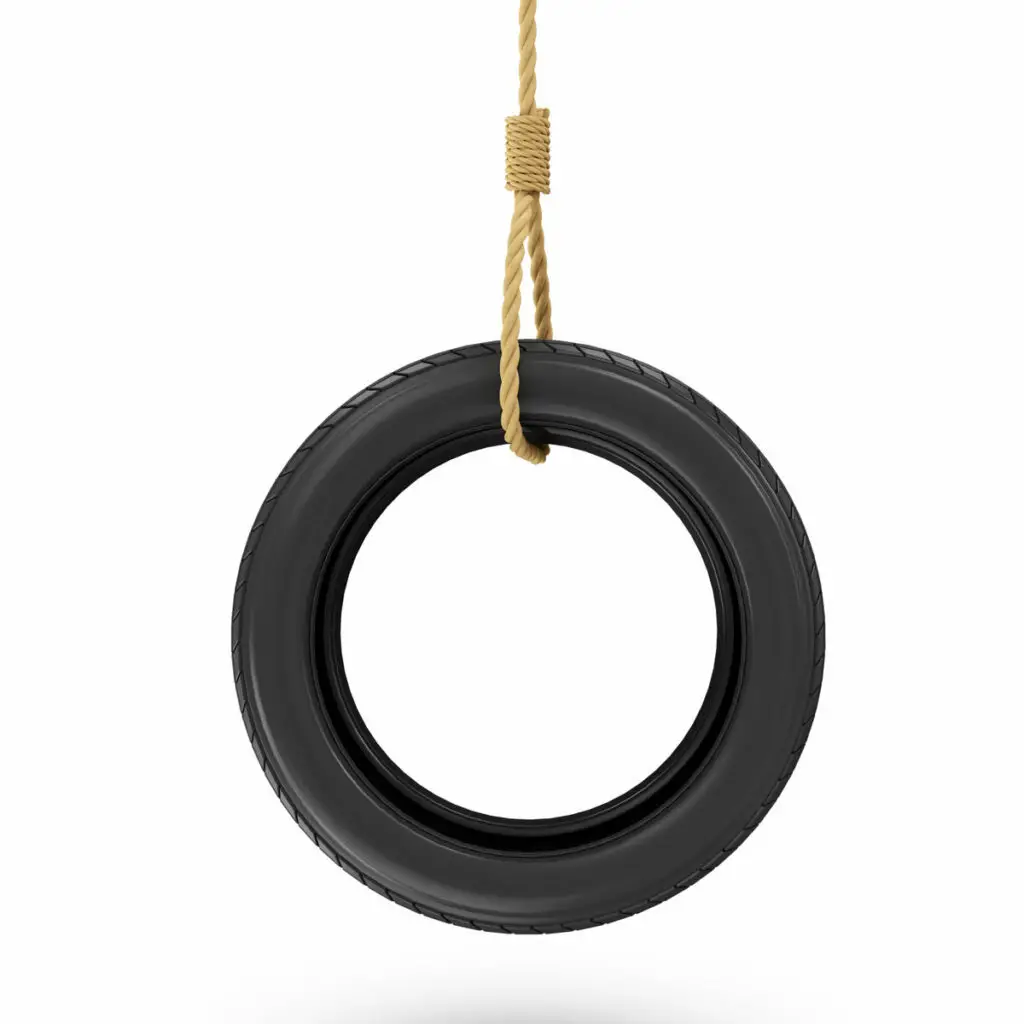
So, you like to rock climb and whether you do it regularly or just a couple of times a year you need a strong rope to bring with you. You may have noticed that your rope is getting worn or maybe you found an old rope in your basement and you aren’t sure if you can still use it. You might be thinking: when should I retire or replace my climbing rope?
The age of a climbing rope along with the amount of wear on it will determine when it needs to be retired. A rope that is used weekly could only last 2-3 years, while ropes used less often could last up to 10 years. No manufacturer recommends using a climbing rope for more than 10 years.
While this is a general guideline on the lifespan of a rope, damage to the rope from poor use and a rope being involved in catching a fall can further reduce the lifespan of a rope. With that in mind here are some tips for recognizing when a rope needs to be retired and how you can retire it.
How Long Do Climbing Ropes Last
When you buy a climbing rope, you will want to ensure that it is a product that is going to last as long as possible. You don’t want to have a rope that will only last a couple of trips before beginning to fall apart. While the lifespan of climbing ropes can vary there are some general guidelines that you can follow with any climbing rope.
The first thing that you should do is track the age of your rope. When you buy a new climbing rope you should record it in a notebook or a note on your phone. Remember that this is the date that the rope was manufactured, not the date that you purchased it.
A note should be included from the manufacturer with the rope indicating its age. Manufacturers will have varying recommendations on how long their ropes should be used for. These recommendations are based on research that the manufacturers do into their ropes as well as stress tests they conduct on new ropes.
It should be noted that most manufacturers have not done excessive research on older ropes. Most tests are conducted on new ropes and then based on the durability and elasticity of the rope the manufacturer determines their lifespan recommendation.
Since there is not a ton of information about whether climbing ropes last beyond these dates set by companies, they can be controversial. Some climbers will say that the dates are set too low and that they are just a way for companies to sell more ropes. Others say that the recommendation is just legal protection for the company and isn’t based on the actual lifespan of a rope.
In reality, these ideas might be right. It could just be a way to encourage people to buy ropes more often or a blanket statement to keep the company from liability. However, just because there isn’t a definite lifespan for your climbing rope doesn’t mean that you should just disregard this information. In a safety booklet put out by the UIAA, an international climbing equipment safety organization, they discuss their recommendations for rope safety and retirement. They also discuss a process for tracking your ropes age.
“The decision on when to retire your rope is your own responsibility. The best you can do is base your decision on knowledge of how a rope has been used, and how it feels and looks. Keeping a log of its use, and regularly checking for damage is good practice, and if in doubt you can ask the advice of other experienced climbers.”
UIAA Standard Safety Recommendations
The lifespan of a climbing rope can vary. It is natural to assume that a company may just want to make money or just keep itself from losing money by setting an arbitrary rule. In reality, you have to consider how much you are willing to risk. While the manufacturer may be trying to lose money by making climbing ropes of lesser quality, you are putting your life on the line.
Never climb with a rope that you wouldn’t trust your life to. Track your usage of the rope, check it for damage regularly (more on that below), and consider replacing any questionable equipment. One final guideline the UIAA gave was if you are thinking about retiring a piece of climbing equipment, including your ropes, it probably is time to do so.
How To Recognize Damage On a Rope
While it is important to track the age of your climbing rope, perhaps more importantly you should be tracking the damage to your rope. As you use your climbing rope it will sustain some sort of damage. Over time, this damage will build up until the rope is unable to function properly and it fails.
In order to prevent injury or death, you will want to keep track of the damage on your rope, and if it is too severe you will want to retire the rope. Remember, it is better to find an issue when you are preparing for a climbing trip than when you are 50 feet in the air.
The first sign of damage you should look out for is chemical damage. This is where your climbing rope is exposed to a chemical that corrodes or weakens the rope. Common chemicals that can cause this damage include acids and vehicle fuel. The materials that make up climbing ropes, especially nylon, are susceptible to irreversible damage from exposure to these chemicals. To make this damage more difficult, the damage that these chemicals cause is not always visible on the surface of the rope.
In order to prevent this type of damage make sure that you always know where your climbing rope will be stored and what it will be stored with. In many accidents that occur because of this type of damage, the climber is unaware that their rope was exposed to chemical damage.
Potentially problematic areas include garage floors and car trunks. Due to the chemicals that are also stored in these areas, your rope may incur damage from leaks or vapors. To prevent this, store your rope in a specialized climbing bag in an area away from chemicals that can damage it.
Another thing to keep in mind is the condition of the exterior of your rope. Climbing ropes typically have two layers, an inner core, and an outer sheath. The outer sheath is a layer of fibers that protect the interior of the rope and take the brunt of wear and tear during use. It is normal for the sheath to become worn over time as the rope is used. It is not normal for the sheath to change its appearance or tear altogether.
When inspecting your rope before climbing look for areas that have a lot of “fuzziness”. This fuzziness means that the sheath layer is starting to break apart. If there is a large section that has broken down this way or you cannot see the core of the rope through the fuzziness, consider replacing the rope.
If the sheath is cut or torn away exposing the core of the rope, replace the rope immediately. Before most ropes break from the weight they are holding, they will tear or cut. If the protective sheath is removed the rope will suffer further damage from rock and other rough objects and will likely be cut in the near future.
There are other things to keep an eye out for. When inspecting your rope look for any stiff sections. These sections often form when a rope is left in the sun. A stiff rope has less strength and will carry less load.
Look for any sections that have bulging cores or a lack of a core. Bulging means the material in the rope is unstable and moving around. Any section that has no core is a red flag. Sections like these mean that only the weak sheath is holding your body weight up. If you discover any of these sections strongly consider replacing the climbing rope.
A final thing to look for is any coating on the outside of your climbing rope. If your rope has sap or tar on it you might want to consider replacing it. When a rope is covered in a coating it makes it difficult to tell whether the sheath or core has been damaged.
Also, check to make sure that the outer layer of rope hasn’t been burned. Nylon has a relatively low melting point and can begin to burn if you belay too quickly or improperly use the rope. Melted nylon is inflexible and brittle. If your rope has large sections that are burned, it might be time to invest in a new climbing rope.
When to Retire a Climbing Rope

While situations may vary between different ropes there are a couple of scenarios where you will want to retire your climbing rope. The first and simplest is when the rope reaches the date that the manufacturer recommends replacing the rope by.
While this may be a bit of an arbitrary number, it is a good benchmark to consider when retiring a rope. When making a purchase note the date the rope was manufactured and track your use of the rope. If you got a used rope from someone else see if you can get the date they bought it.
Tracking the age of the rope is the easiest way to keep yourself safe. Something to keep in mind is the activities that you use your rope for and the frequency that you use the rope can decrease the lifespan of your climbing rope. Rough use of the rope can cause damage to the rope.
Depending on how often the rope is used, it may not reach the manufacturer’s recommended retirement age. A rope that is used one or two times a year may last 10 years. A rope that is used more often may only last 2 or 3 years. Ropes that are used daily could last less than a year. Always keep track of the age of your rope, and how often you use it to keep yourself and others safe.
A climbing rope should be retired immediately if it is subjugated to a severe fall. Any fall that has a fall factor higher than 1 (you fall as far as the rope is long), can cause severe stress to the rope and you should not continue to use the rope for climbing. Ropes with chemical damage or cuts to the sheath need to be retired and replaced immediately.
How to Retire a Climbing Rope

Having determined that your climbing rope needs to be retired, how can you retire it? The easiest option is just to throw out the rope in the garbage.
To prevent any confusion and keep anyone from using the rope, you should mark it with paint or cut it into smaller sections. This will prevent someone who doesn’t know the history of the rope from using it and injuring themselves. To keep the rope out of a landfill, see if your local climbing shop or gym accepts old ropes. Some locations take these ropes and recycle the material into new climbing gear.
You could also repurpose your rope in a project around your home. Old ropes can be used to make rugs, cupholders, lanyards, and much more. It is relatively easy to repurpose your old climbing gear into something that you can use inside of your home, but you may want to avoid it if your old climbing rope is dirty or stained.
If you are using the rope for a load-bearing project like a tire swing, make sure that you check the rope for any serious damage. While it might not be as serious as when you a climbing dozens of feet off of the ground, you still don’t want the rope holding your seat or swing up to snap.

